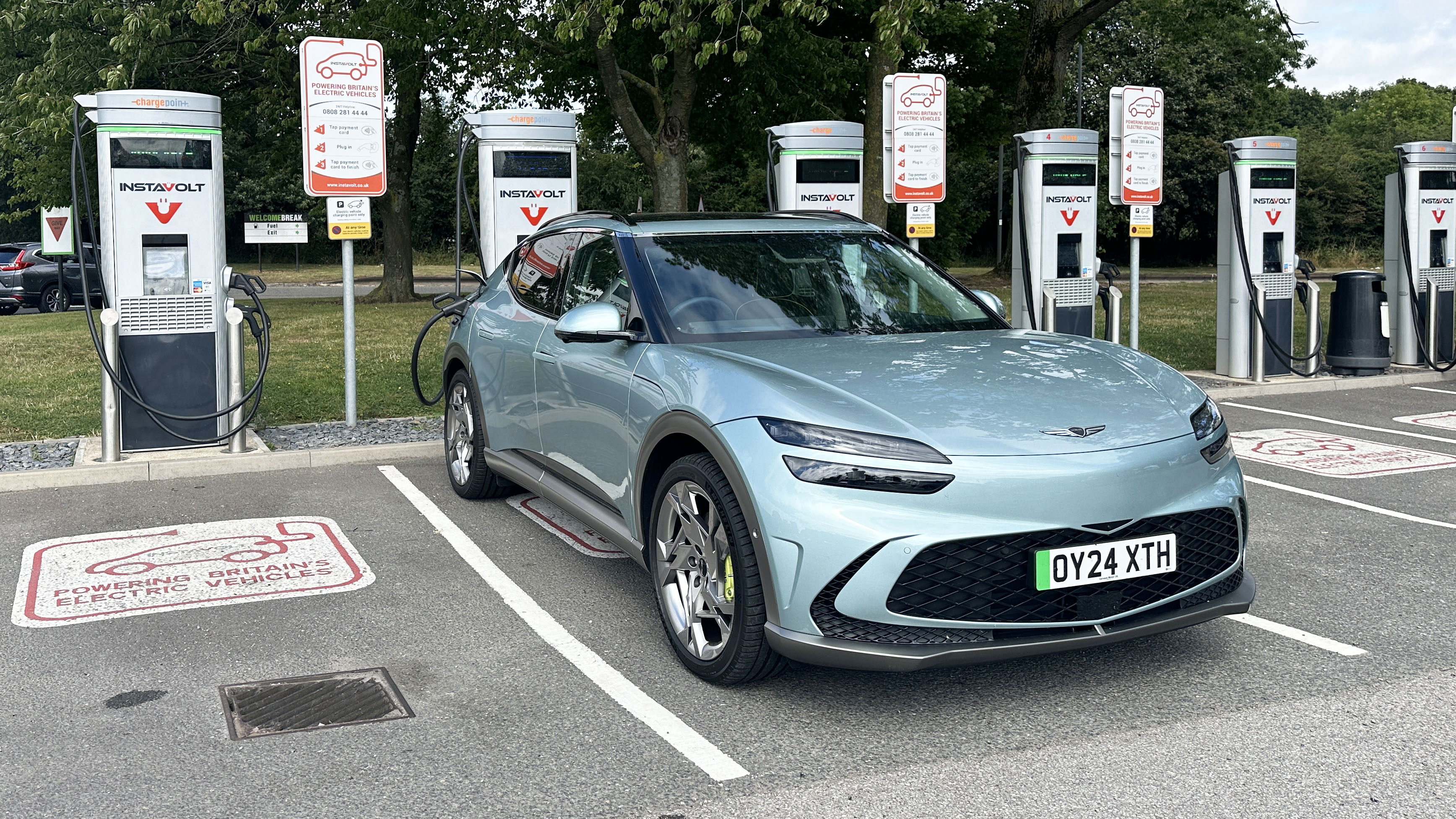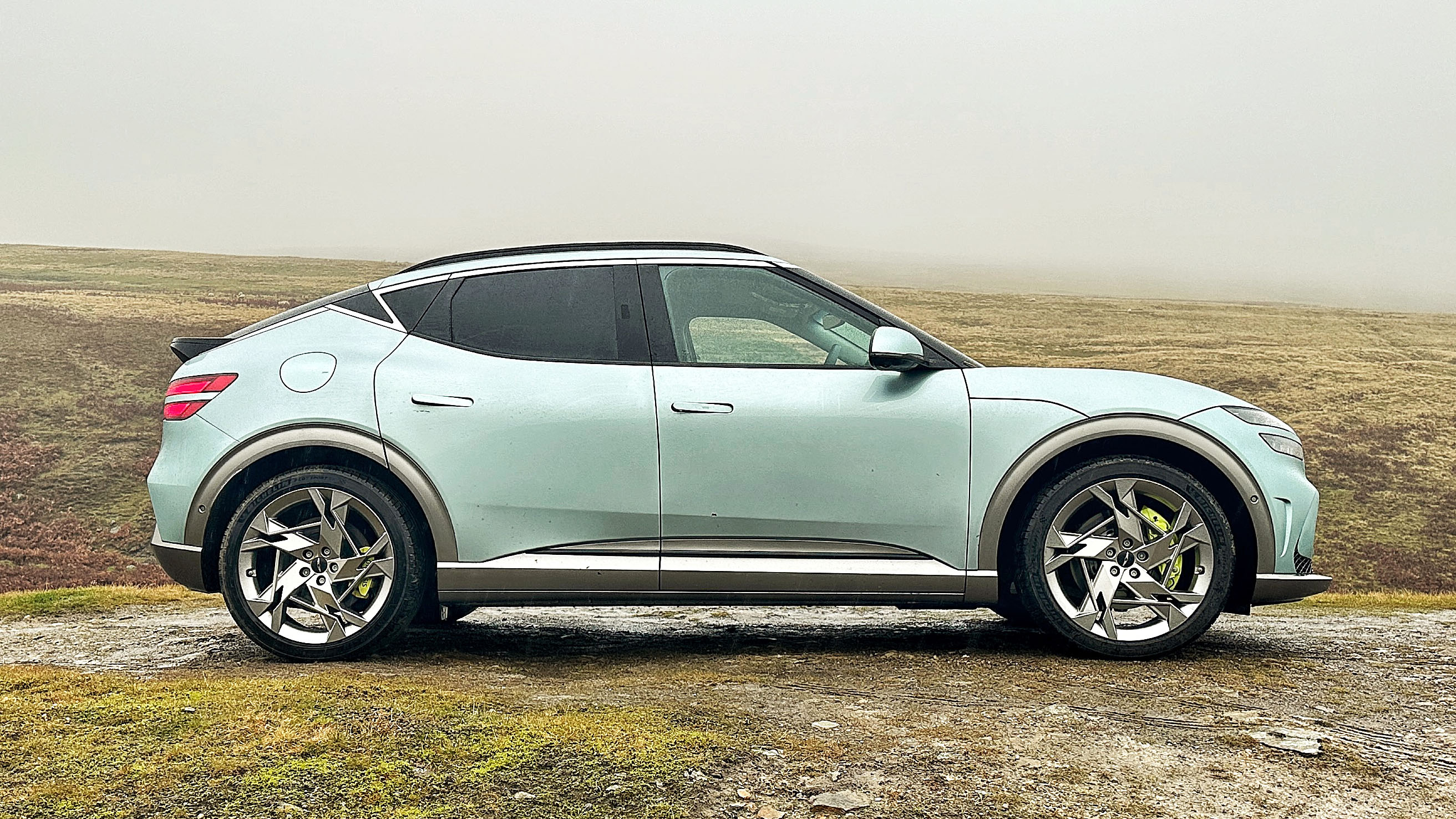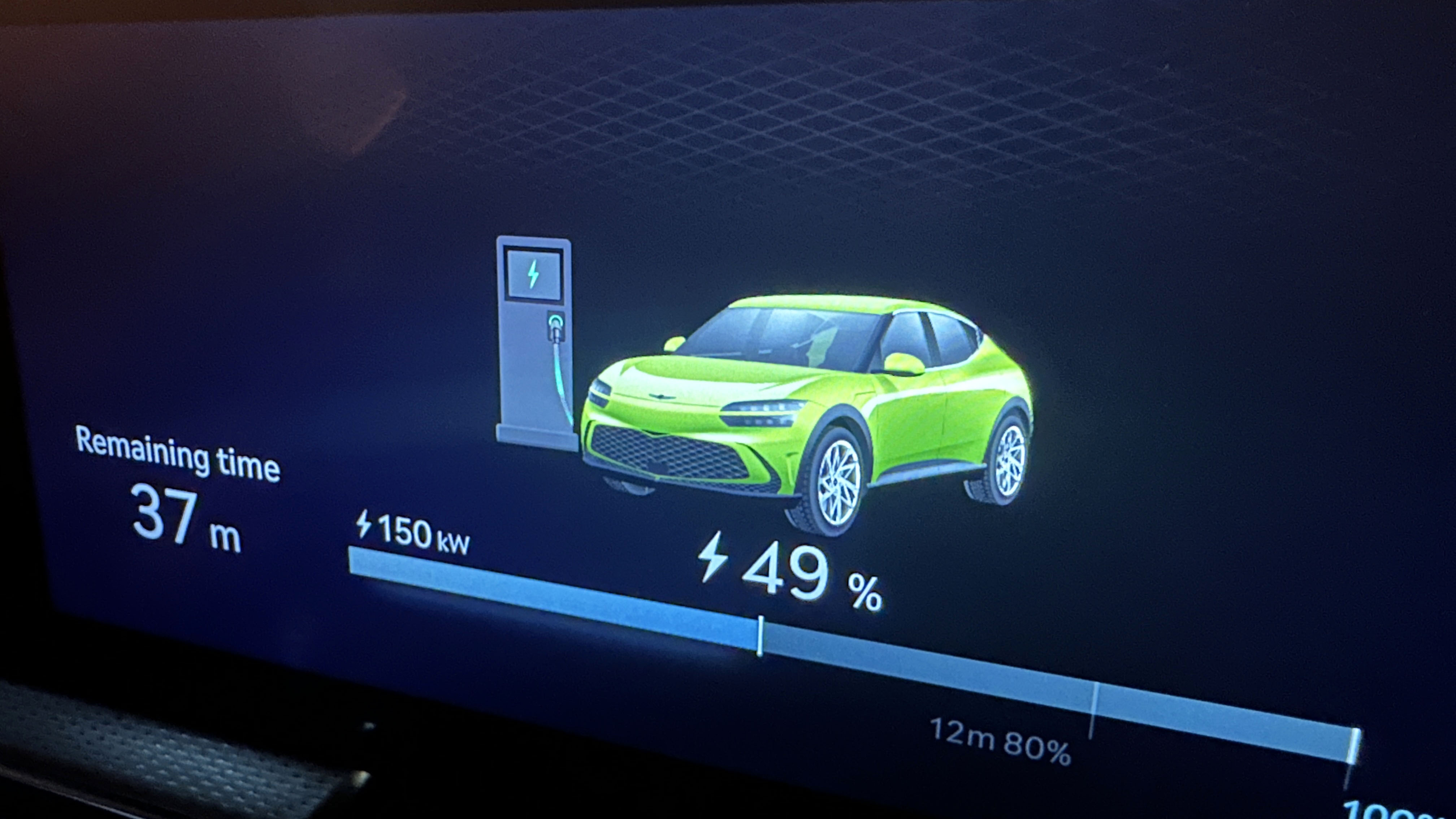
Genesis GV60 Sport Plus - long-term review
£66,900 / as tested £74,855 / PCM £985
SPEC HIGHLIGHTS
- SPEC
Genesis GV60 Sport Plus
- Range
289 miles
- ENGINE
1cc
- BHP
482.8bhp
- 0-62
4s
The Genesis GV60's 800V means charging's a breeze... mostly
You only ever realise how useful fast charging is once you have it. Or I guess, once you lose it. With chargers - even the so-called ‘rapids’ - having wildly varying outputs depending on how many people are using the station, your car’s state of charge and the current weather conditions on the dark side of Mars, having a car that can hoover up electrons as fast as possible really makes a difference. Tesla owners already know this. But happily, so do Genesis buyers.
The point is that I’ve got a stupid schedule most weeks, so never necessarily have enough charge to get there and back without public charging. So I do a lot of it. And generally don’t have any problems. Yes, I do have a look at possible/probable chargers around where I need to be, and yes I’ve been doing this a while, so you get a sixth sense about where will likely be busy and when it’s probably more time efficient to drive another couple of miles from a major road to get a charge on. But every time, having a car that will accept as much charge as the charger is capable of giving, for as long as it’s able to give it, will pay dividends.
Case in point, the GV60 has an 800-volt architecture, so in theory will pull 233kW if the charger can provide that. That would be 10-80 per cent in just over quarter of an hour. Now, I’ve not really had the car managing to charge at more than about 150kW for any length of time, but it’ll do that regularly and for a good portion of the time it’s charging. Over 80 per cent, when charging slows down to preserve battery life, it’ll still grab 40-50kW. So the 800-volt sweetspot for charging is bigger.
What does that mean in practical terms? I rarely wait for the car. If I’ve driven 150-170 miles - so, say, two and a half hours - once plugged in, a 20-minute stop really isn’t that vexing, and likely as much as I’d stop in an ICE vehicle after parking up, grabbing a coffee and a rest break and then pulling up to the filling station afterwards.
Of course, it can be annoying. There’s no queueing system for chargers, so if there are people waiting, that can be a serious point of friction. But I tend to just keep a bit of battery in reserve and move on if things are really busy. You do have to think about timings and mileages, but it really isn’t that hard, and if you’ve got a regular commute you get to know where the decent chargers are. My wildly varying schedule doesn’t allow for that all the time, but also proves that it can be done. We also need weather-protected chargers and cheaper public charging, but that’s for another chat.
Cost? I can get it charged at home and it works out at about 2-3p per mile (just for the electricity, not including the purchase price or running costs, obvs). A figure that gets knocked to the moon if charging at 77p-per-kW public chargers too much.
But getting back to the original point; the GV60 makes having an electric car just that little bit easier by being an efficient, quick and convenient charging buddy. Plus, there have been some over-the-air convenience updates (like wireless CarPlay) which appeared overnight, though it did re-set all my shortcut buttons…
Featured

Trending this week
- Car Review
BMW 1 Series
- Top Gear's Top 9
Nine dreadful bits of 'homeware' made by carmakers






